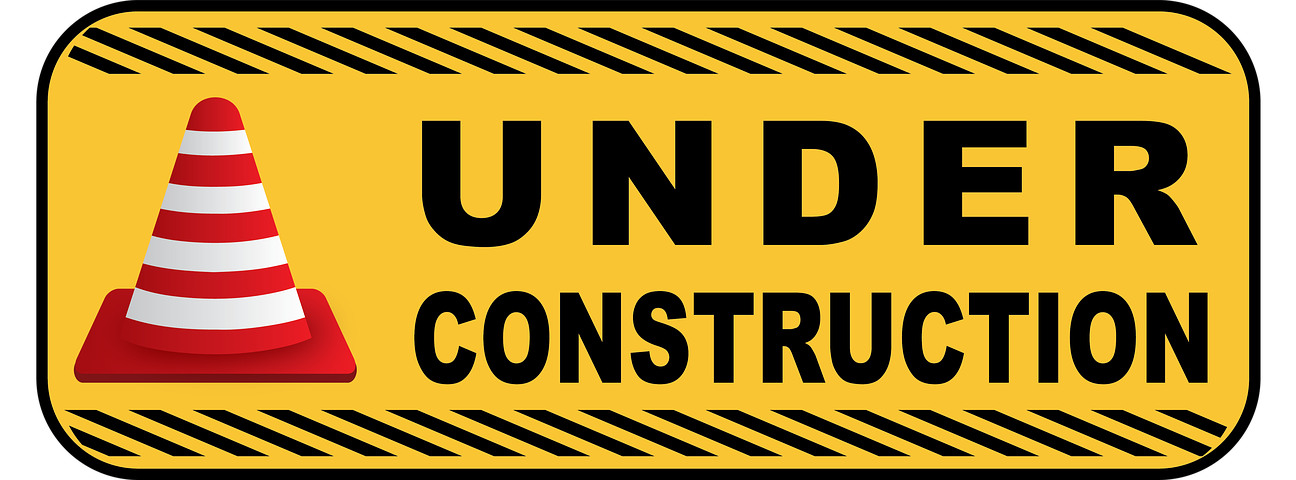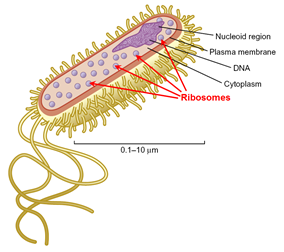RWS-09 The Ribosomes
 Some parts of this site are currently incomplete & will be updated asap
Some parts of this site are currently incomplete & will be updated asap
Other parts will change continually so use “Refresh” in your browser !!
There is extensive use of “Tooltips” text to support learning which do not seem to render on a Smartphone, so this site is best viewed via a computer’s HD monitor
Learning Resources Available, All Work Subject to DHRF's "GD"
What are the Ribosomes and what do they do?
“Ribosomes, also called Palade granules (after discoverer George Palade and due to their granular structure), are macromolecular machines, found within all cells, that perform biological protein synthesis (mRNA translation). Ribosomes link amino acids together in the order specified by the codons of messenger RNA (mRNA) molecules to form polypeptide chains. Ribosomes consist of two major components: the small and large ribosomal subunits. Each subunit consists of one or more ribosomal RNA (rRNA) molecules and many ribosomal proteins (RPs or r-proteins)” Source: Wikipedia (DHRF Emphasis)
Research Work Stream 08 - Codons
“The Ribosome is an RNA-Protein complex composed of two subunits” Source: (Cox et al. 2015, p. 619)
“Ribosomes are organelles made of protein and RNA that direct protein synthesis in the cytoplasm”
Source: (Postlethwait and Hopson 2006, p. 79)
“Ribosomes are complex, cytoplasmic ‘machines’ that can be programmed, like a computer, to translate the information encoded by any mRNA. Ribosomes contain both protein and RNA. The RNAs of a ribosome are called ribosomal RNAs (or rRNAs), and like mRNAs, each is transcribed from one of the DNA strands of a gene”
Source: (Karp 2013, p. 429)
“The function of the ribosome is to translate genetic material into proteins - ribosomes are the fundamental ‘factories’ of all cells” Source: (Belk and Borden 2009, p. 62)
Polyribosomes
“When a messenger RNA in the process of being translated is examined in the electron microscope, a number of ribosomes are invariably seen to be attached along the length of the mRNA thread. This complex of ribosomes and mRNA is called a polyribosome, or polysome (Figure 11.52a). Each of the ribosomes initially assembles from its subunits at the initiation codon and then moves from that point toward the 3’ end of the mRNA until it reaches a termination codon. As each ribosome moves away from the initiation codon, another ribosome attaches to the mRNA and begins its translation activity. The rate at which translation initiation occurs varies with the mRNA being studied” Source: (Karp 2013, p. 475) (DHRF Emphasis)
Research Work Stream 04 - Codons
Transcription & Translation
Image#3: Fig 7.3 (Hoefnagels 2018, p. 115)
“DNA to RNA to Protein. (a) The central dogma of biology states that information stored in DNA is copied to RNA (transcription), which is used to assemble proteins (translation)”
“(b) DNA stores the information used to make proteins, just as a recipe stores the information needed to make brownies” Source: (Hoefnagels 2018, p. 115) (DHRF Emphasis)
“First, in transcription, a cell ‘rewrites’ a gene’s DNA sequence to a complementary RNA molecule”
“Then, in translation, the information in RNA is used to assemble a different class of molecule: a protein (just as an interpreter translates one language into another)” Source: (Hoefnagels 2018, p. 115) (DHRF Emphasis)
Research Work Stream 07 - The Central Dogma (of DNA)
What kicked it all off…
… was in March 2021, re-reading the quote below that DH had read and highlighted some years previously…
Upon re-reading the “penny-dropped” and a “Eureka Moment” took place which led to the creation of DHRF a day or two later…
“The Ribosome is the central processor that decodes the universal machine-code of life…“ Richard Dawkins cited in “Praise for Gene Machine” section of (Ramakrishnan 2018, p. ii) (DHRF Emphasis)
“A ribosome is one of the most fundamental structures in all of biology. It is an assembly of many different proteins and large pieces of RNA, which make up two-thirds of its mass and actually play the key roles in its functioning. The ribosome takes the information in RNA transcribed from a gene and then stitches together a specific sequence of amino acids to make a protein. Everything made by the cell is made either by ribosomes or by proteins called enzymes, which are made by ribosomes. The ribosome is the interface between genetic information and how things actually appear” (Reece et al. 2014, p. 27) citing from an interview for Ch.1 with Venki Ramakrishnan
“There are many ribosomes in every cell — many thousands in cells that make lots of protein, such as liver cells or actively growing bacteria”
Learning Resources: Venki Ramakrishnan
![]()
Scientific Method Stage 4 - Formulate a Hypothesis:
RWS03/HY-0005: The Ribosome is functionally equivalent to Forth’s Virtual Machine Discussion
![]()
However, rather than the Ribosome being a “central processor”, DHRF believes it is a “virtual machine”
![]()
Scientific Method Stage 4 - Formulate a Hypothesis:
RWS03/HY-0006: RNA is functionally equivalent to the way a datastream containing symbols & tokens is processed Discussion
![]()
Where are the Ribosomes?
Image#1: Based upon Fig 1.04 from (Clark et al. 2018, p. 7) Mark-up in RED by David Husband
“Typical Prokaryotic Cell”
“The components of a typical prokaryote, a bacterium, are depicted. There is no nucleus and the DNA is free in the cytoplasm where it is compacted into the nucleoid region” (Clark et al. 2018, p. 7)
Image#2: Based upon Fig 1.05 from (Clark et al. 2018, p. 7) Mark-up in RED by David Husband
“Typical Eukaryotic Cell”
“A typical eukaryotic cell showing a separate compartment called the nucleus that contains the DNA” (Clark et al. 2018, p. 7)
Important Notes:
![]()
Scientific Method Stage 4 - Formulate a Hypothesis:
RWS03/HY-0004: The DNA and the Nucleous that contains the DNA are functionally equivalent to the memory in a ROM and the packaging that contains it Discussion
![]()
References:
Clark, D. P., Pazdernik, M. and McGehee, M., 2018. Molecular Biology. Elsevier Science Publishing Co Inc.
Belk, C. and Borden, V., 2009. Biology: Science for Life. Cummings.
Cox, M. M., Doudna, J. A. and O’Donnell, M., 2015. Molecular Biology - Principles & Practice. 2nd ed. Macmillan Learning.
Hoefnagels, M., 2018. Biology : The essentials. New York, NY: McGraw-Hill Education.
Karp, G., 2013. Cell and Molecular Biology: Concepts and Experiments. 7th ed. Wiley.
Postlethwait, J. and Hopson, J. L., 2006. Modern biology. Orlando Austin: Holt, Rinehart and Winston.
Ramakrishnan, V., 2018. Gene Machine: The Race to Decipher the Secrets of the Ribosome. Basic Books.
Reece, J. B., Wasserman, S. J., Urry, L. A., Minorsky, P. V., Cain, M. L. and Jackson, R. B., 2014. Campbell Biology. Boston: Pearson.
In view of DHRF’s commitment to support learning, there is a much higher “learning content” in the Research Work Streams than would otherwise be the case… Please be aware of that ↩


